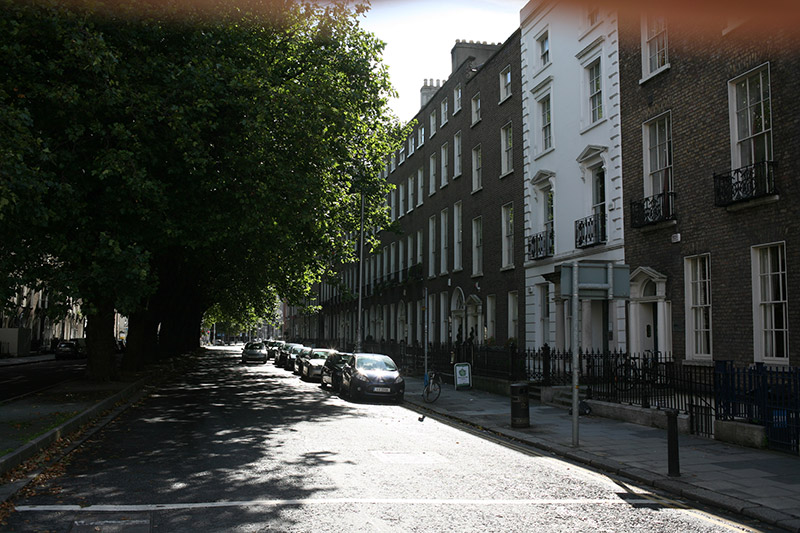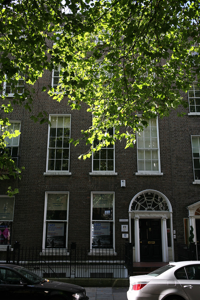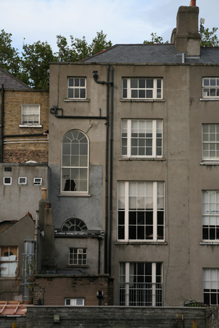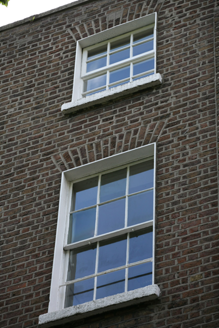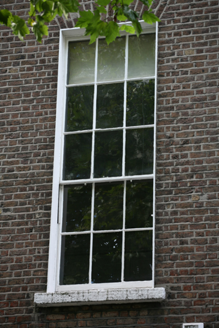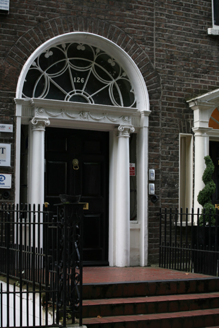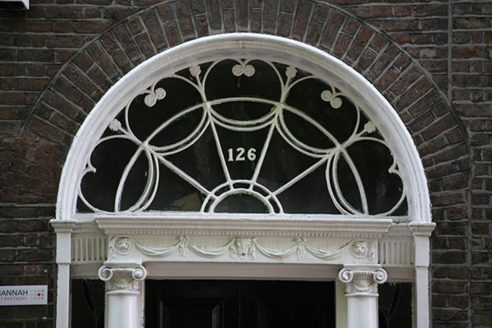Survey Data
Reg No
50930044
Rating
Regional
Categories of Special Interest
Architectural, Artistic
Original Use
House
In Use As
Office
Date
1790 - 1810
Coordinates
316562, 233292
Date Recorded
09/09/2015
Date Updated
--/--/--
Description
Terraced three-bay four-storey over basement former townhouse, built c. 1800, with single-storey over basement return to south. Now in use as offices. M-profile pitched slate roof, hipped to the west and set behind parapet wall with granite coping. Shouldered brick chimneystacks to the east party wall with lipped clay pots. Parapet gutters, some rainwater goods visible to rear only. Buff brick walls laid in Flemish bond with cement pointing, having masonry course over ruled-and-lined rendered basement walls. Gauged brick square-headed window openings, pair of round-headed openings to rear, having masonry sills, and largely original timber sash windows. Original six-over-six pane to second floor, nine-over-six pane to first floor, replacement six-over-six pane to basement and replacement top-hung timber casement windows to third floor. Replacement timber sash windows to rear including tripartite Wyatt-style windows to all floors on eastern-bay. Gauged brick round-headed door opening with painted masonry Ionic doorcase comprising square-headed door opening flanked by engaged Ionic columns and fixed sidelights supporting stepped lintel cornice embellished with swags and surmounted by original decorative painted fanlight. Original timber door with six raised-and-fielded panels and brass furniture. Door opens onto terracotta tiled platform and steps bridging basement, enclosed by replacement steel railings set on granite plinth. Replacement steel steps provide access to basement with glazed timber door below platform. Fronting onto south side of Baggot Street Lower with rear plot used for parking.
Appraisal
A substantial former townhouse retaining a wealth of historic fabric including a handsome doorcase, fanlight and some original windows. Located in the heart of the south Georgian core, it retains its original external appearance and greatly contributes to the historic character of the streetscape.
